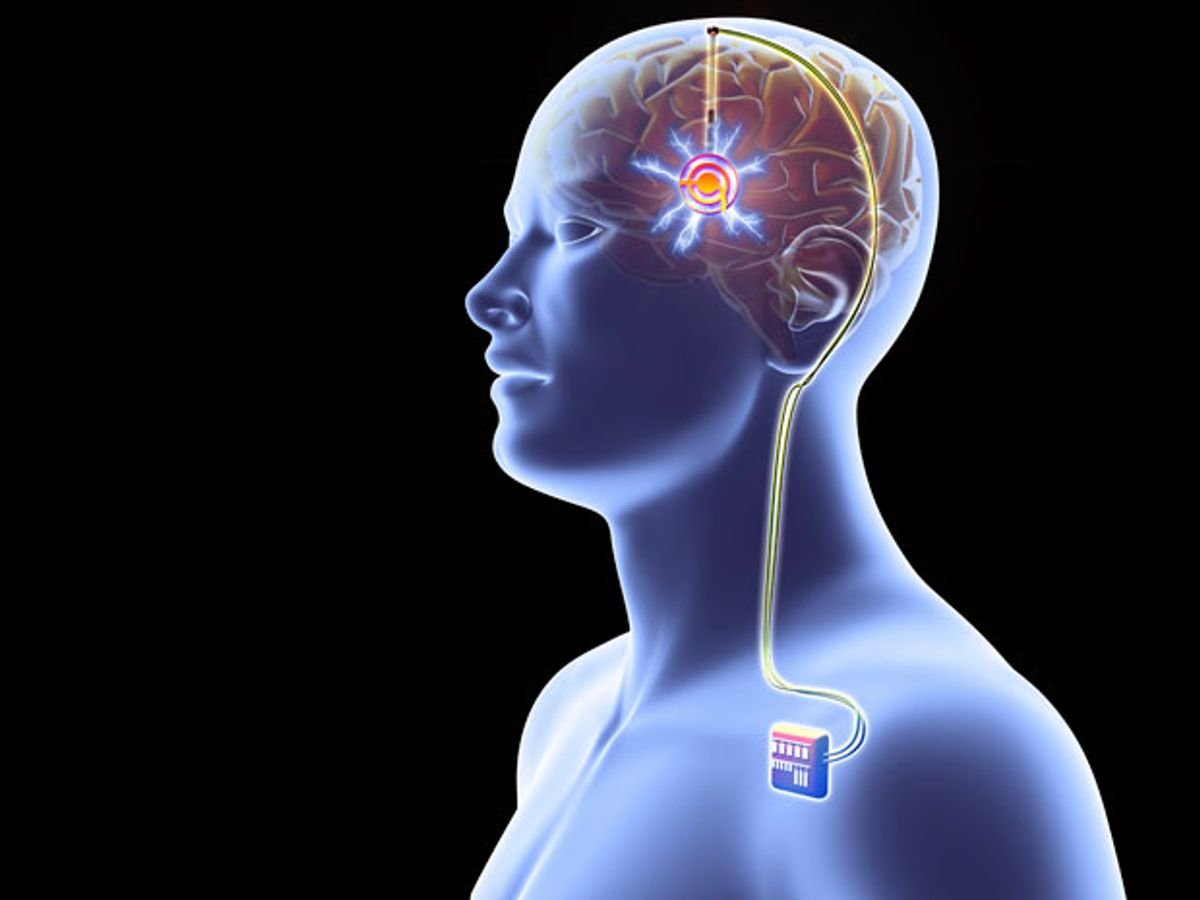Here are three things we know for sure about deep brain stimulation (DBS) as a treatment for severe depression:
1. When the pacemaker-like brain implants do help depressed people, those people get dramatically better. “I have patients who got their implants 10 years ago now,” says Helen Mayberg, a professor of psychiatry and neurology at Emory University, in Atlanta. “These people get well and they stay well,” she says.
2. Unfortunately, DBS doesn’t help everybody. Experimental trials by Mayberg and others have consistently had a subset of people who simply don’t respond to the treatment. And two big industry-sponsored trials were counted as failures by the companies involved, squashing hopes that the treatment would soon be available for mainstream clinical use.
3. Researchers must figure out why some depressed patients respond to DBS while others don’t; otherwise their experiments will never lead to a truly practical treatment that can gain regulators’ approval. Two new academic studies show that researchers are progressing toward that understanding.
The treatment, which requires brain surgery for the implantation of electrodes and then constant pulses of stimulation, is based on a successful DBS treatment for Parkinson’s disease, which improves patients’ tremors and other movement problems. While the exact mechanism of DBS’s action in the brain is still unclear, many think the steady stimulating pulses override faulty patterns of electrical activity in the brain region that surrounds the electrodes.
For depression, much research and debate have centered on finding the proper target for stimulation. But Mayberg now advocates thinking of depression “in neural circuit terms.” She has long focused on a brain region called the subcallosal cingulate (more specifically, on a piece of the SCC named Brodmann’s area 25), which is known to play a role in regulating mood. Recently her team has also begun scrutinizing the bundles of neural fibers that project from the SCC to connect to other brain regions. “We have to rethink things: It’s not about the target but the projections,” Mayberg says.
In a study reported in the journal Molecular Psychiatry in April, Mayberg’s team treated 11 depression patients who hadn’t responded to drugs, talk therapy, or electroconvulsive therapy. Before the surgery, the researchers used MRI scans of each patient to identify the exact location of four fiber bundles that had been identified as crucial in 2014 research involving patients who responded to DBS. That earlier study looked for commonalities in responders’ brains, and it found they all had strong connections along those four tracts. “We can now use that template,” Mayberg says.
Surgeons working with Mayberg implanted the electrodes in a location that ensured that the pulses of electricity would travel along those neural fibers, thus activating not only the SCC but also the connecting brain regions. When the 11 patients were evaluated after six months, eight of them were judged to be responding to treatment.
To try to help the nonresponders, the researchers evaluated the placement of their electrodes and their stimulation parameters. For one patient, the researchers adjusted the parameters to more closely match the desired template of fiber activation. “We changed it to get those fiber tracts stimulated, and he got better,” Mayberg says. For the remaining two nonresponders, there was no clear anatomical explanation for their lack of response.
Another study, published in the journal Brain Stimulation, also stresses the importance of understanding the brain’s connectome, which can be thought of as a circuit diagram of the brain. Thomas Schlaepfer, a professor of psychiatry at the University of Freiburg, in Germany, treats depression through a different neural circuit than Mayberg’s group. His team implanted electrodes in the medial forebrain bundle, which is part of the neural circuitry involved in feelings of pleasure and motivation. After one year, six of his eight patients had responded positively to the DBS treatment.
For one of the nonresponders, Schlaepfer says he saw a clear cause: The patient had experienced a hemorrhage during the implantation surgery. “When we did imaging, we saw that the hemorrhage was at exactly the site where we stimulated,” he says. “That probably robbed her of the ability to respond, which was very tragic for her—but almost proved the point.”
With two different sets of neural circuits under investigation and showing promising results, researchers can imagine a day when depressed patients go in for brain imaging so doctors can map their individual circuitries and devise custom-made treatment plans. “No treatment works for everyone,” Mayberg says. “We should figure out who does best with what. The state of these brain networks will determine how best to intervene.”
Herbert Ward, a psychiatrist at University of Florida Health and an expert on DBS, calls both Mayberg and Schlaepfer’s results “very promising” and expects them to guide future work to prove DBS’s efficacy. “I was never discouraged by the failure of the industry-sponsored clinical trials,” Ward says, which targeted brain structures rather than their connections. If future trials focus on the circuitry of depression instead, Ward believes the treatment will eventually gain regulatory approval. “I think there will be a place for DBS in the treatment of depression,” he says.
New Buzz on Brain Stimulation for Depression
Treatments that target specific neural circuits provide better results
22 May 2017
3 min read

Illustration: iStockphoto